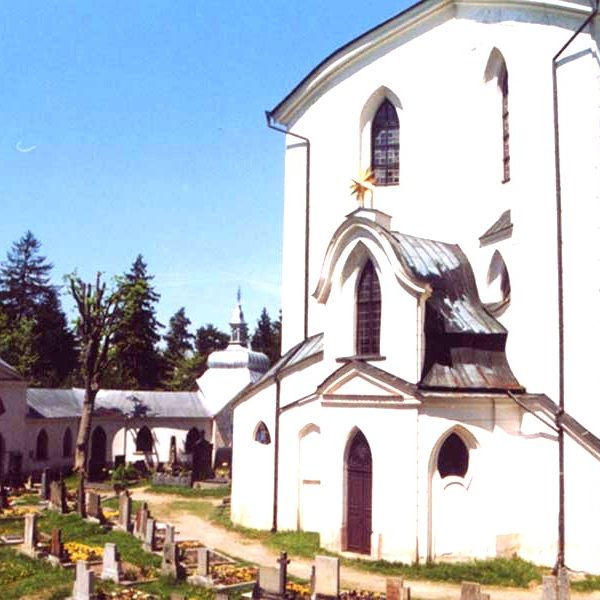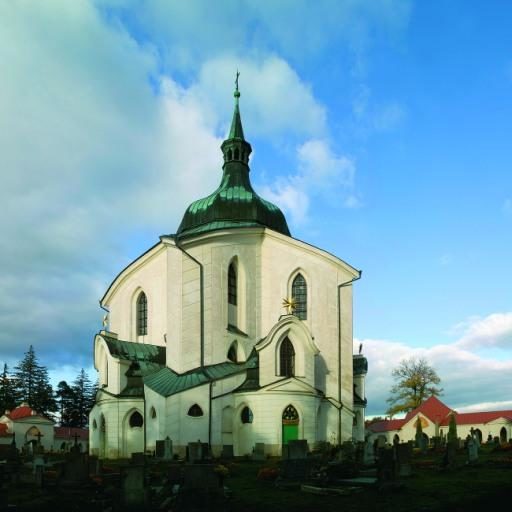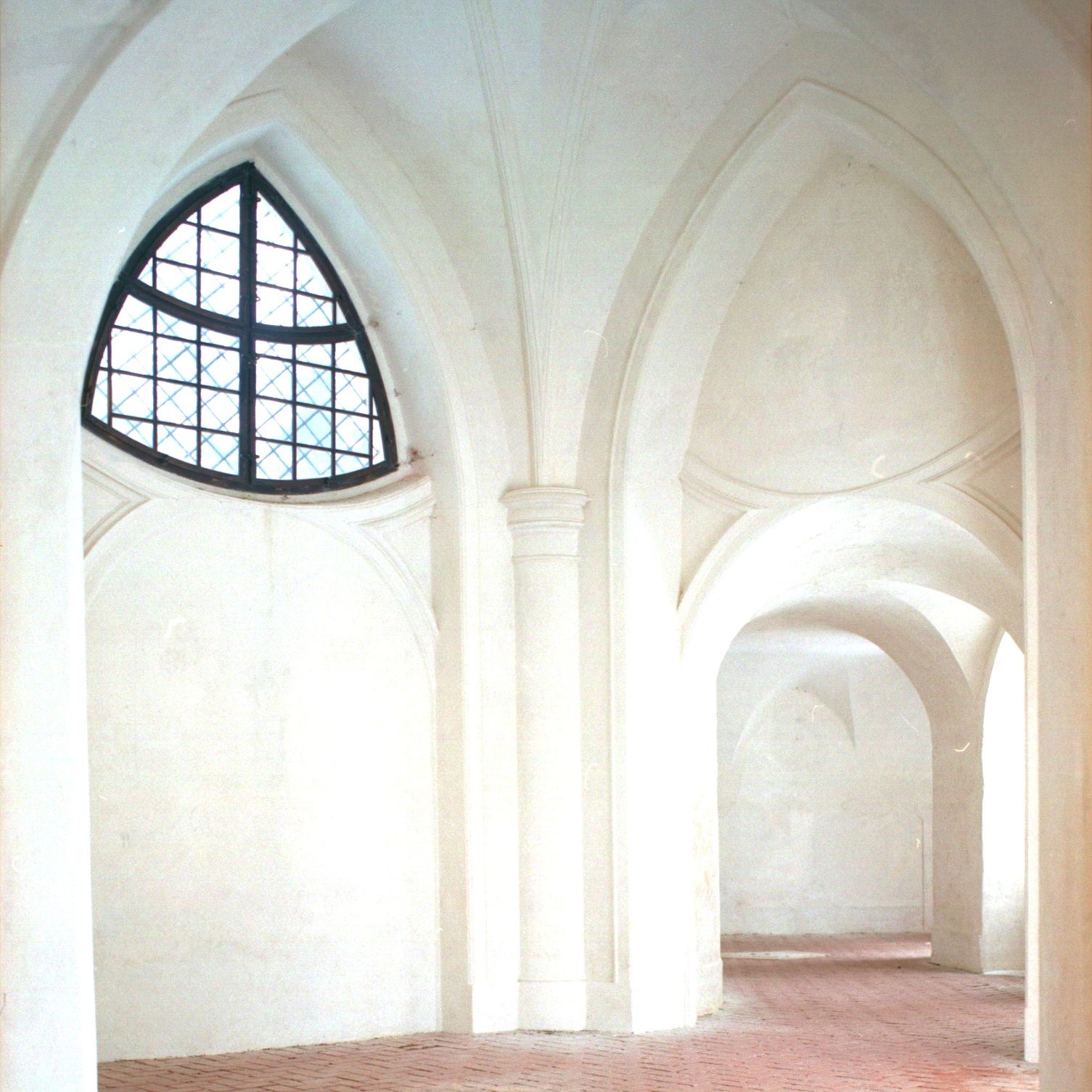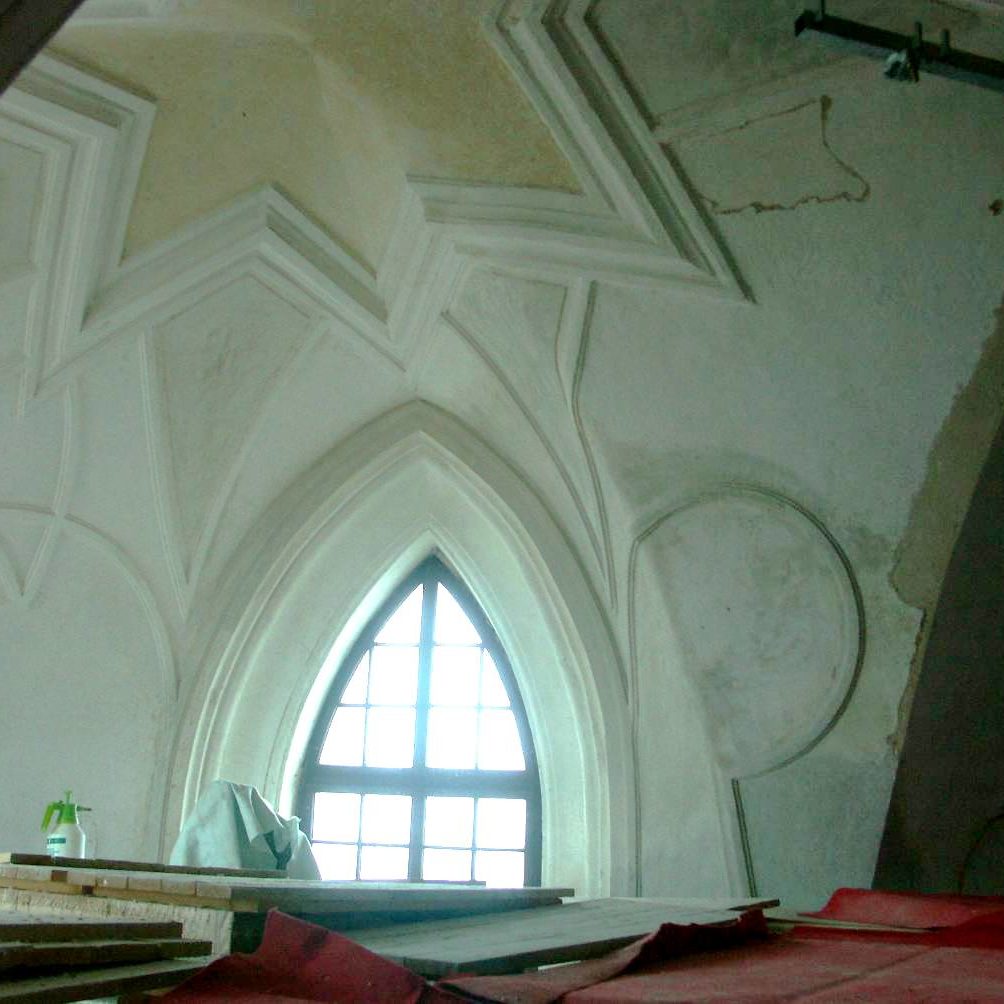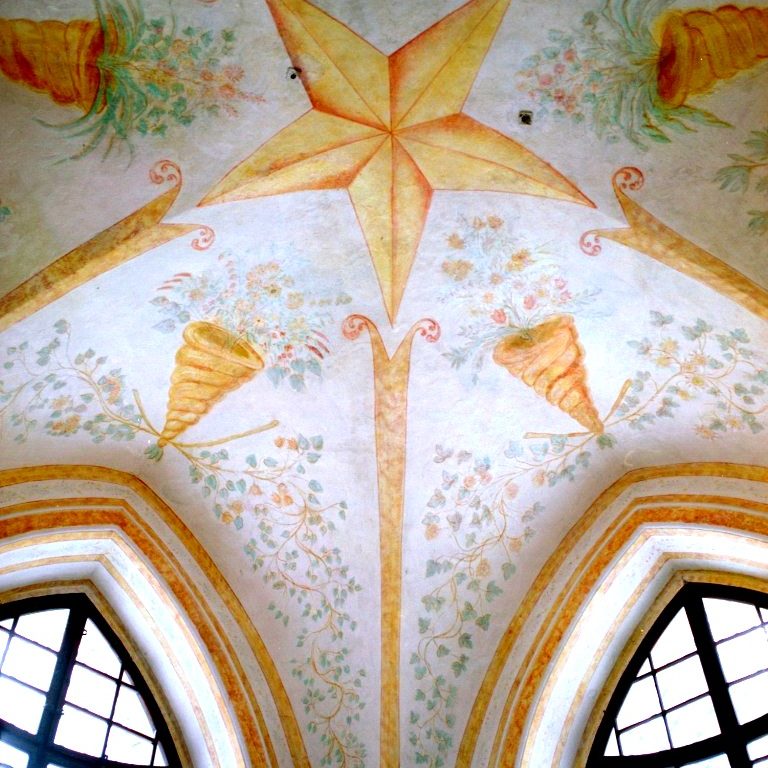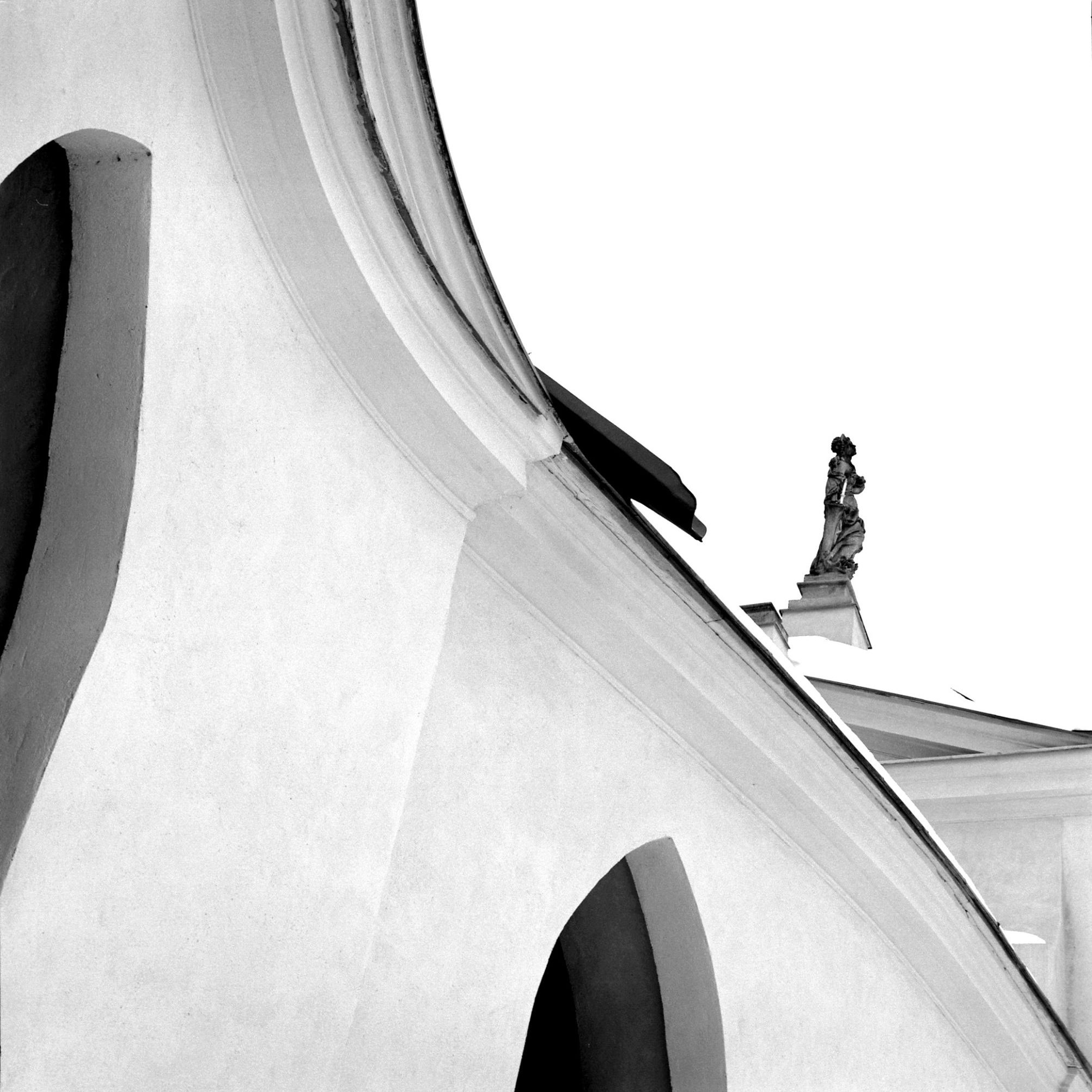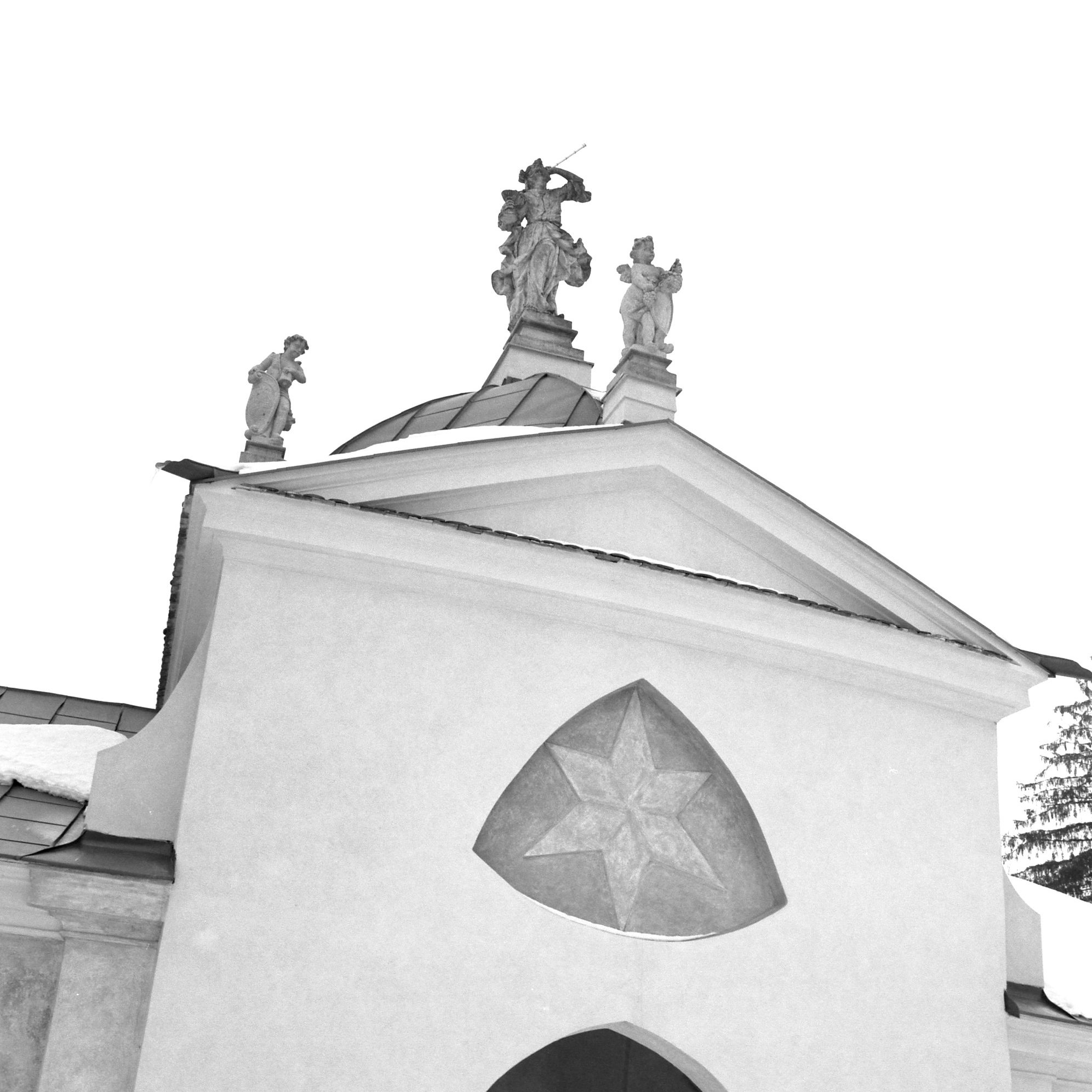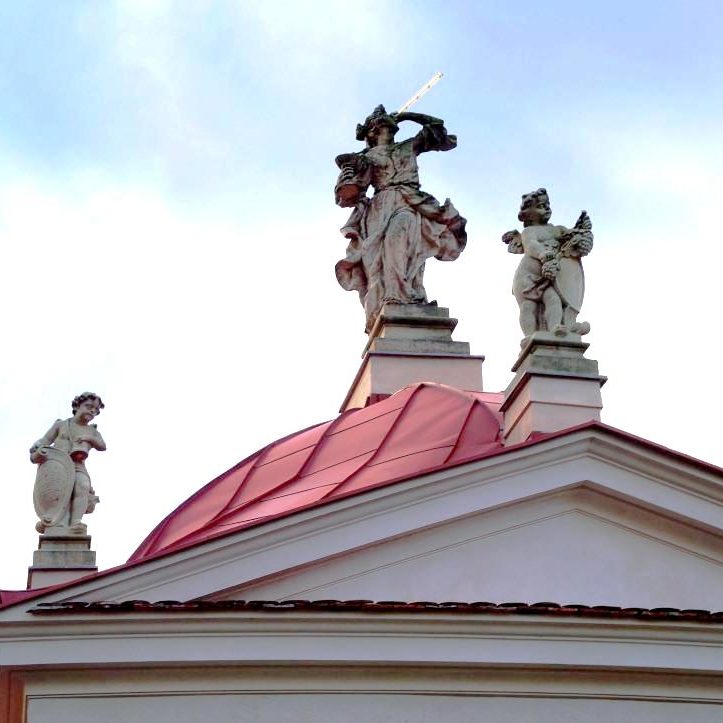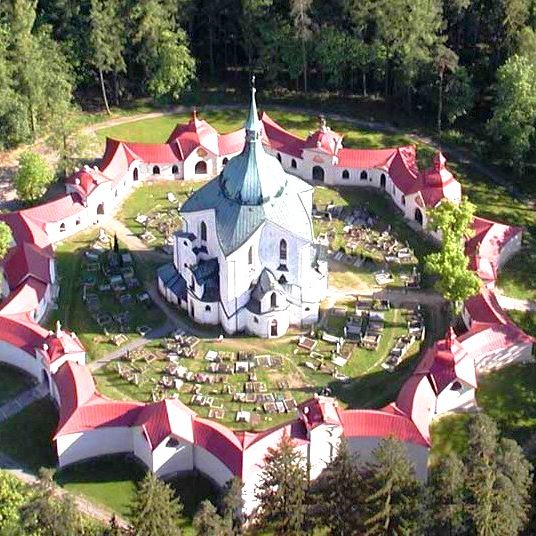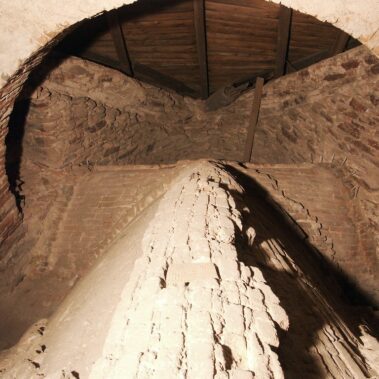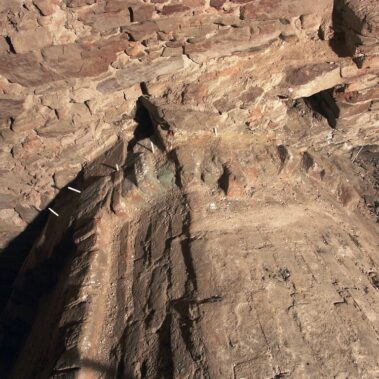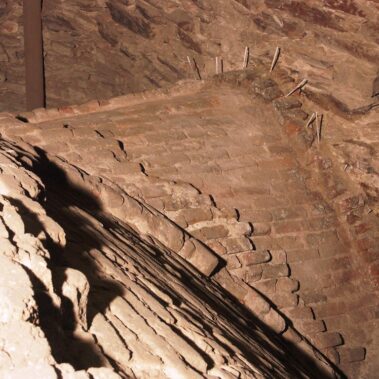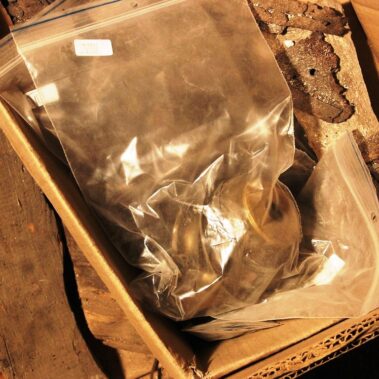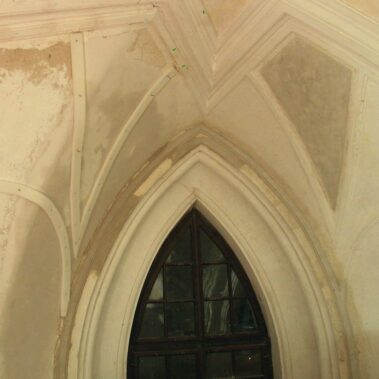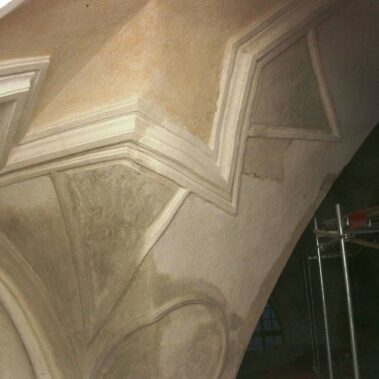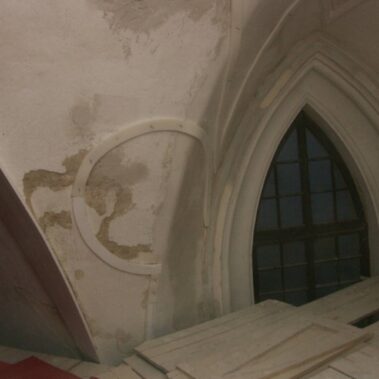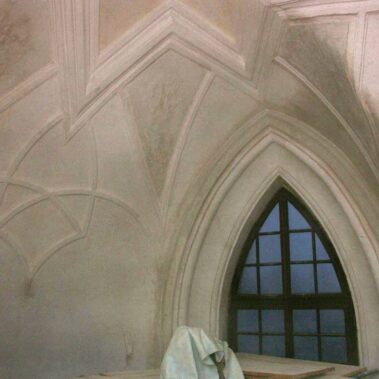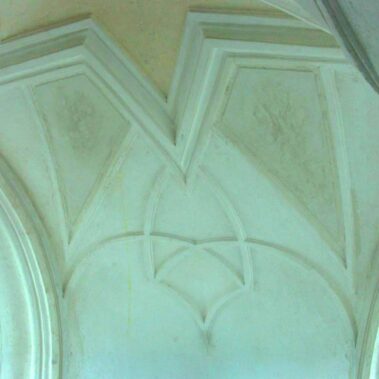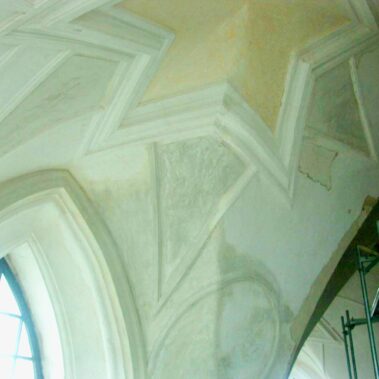Church of St John of Nepomuk at Zelená Hora, Žďár nad Sázavou, Czech Republic

| Address: | Správa památkového areálu Zelená hora, Komenského 1786/25, 591 01 Žďár |
|---|---|
| Description of work: |
Reconstruction of plastering and stucco ornamentation in lower parts of the nave
Reconstruction of moulded plastering and ornamental fascia in one of the niches Reconstruction and consolidation of the polychrome on the banisters of the church galleries Cleaning of the interior of the cupola |
| Investor: | National Heritage Institut |
| Contractor: | GEMA ART GROUP a.s. |
| Implementation: | 04/ 2006 – 12/ 2008 |
The Church of St John of Nepomuk at Zelená Hora was built between the years 1720 and 1740. The impetus for its foundation came from the then Abbot of the Cistercian monastery in Žďár nad Sázavou, Václav Vejmluva (1670 – 1738). During Vejmluva’s time the monastery and its estate was one of the largest in the whole of Moravia.
The abbot revered the figure of John of Nepomuk (133- 1393), the Vicar General of the Archbishop Jan of Jenštejn, who was tortured to death on orders from King Wenceslas IV. The cult of John Nepomuk was intensely promulgated as part of the recatholization of Bohemian Lands after the Battle of Bílá Hora. Abbot Vejmluva had probably nurtured a desire to build a church in honour of St John of Nepomuk for some time when acquisition of a treasured relic – a bone fragment from John Nepomuk’s skull – provided the crucial impulse.
To bring into effect his plans, the abbot hired the renowned architect Jan Blažej Santini and the cooperation of the two men resulted in an outstanding work of architecture, unsurpassed within the Czech Republic. The ground plan of the church has the shape of a five-pointed star, the ambit has five entrances and five chapels. The interior stuccoes have the shape of a ten-pointed star, with a bas-relief shape of a tongue within. The broken arched windows have the shape of a tongue, a Bishop’s mitre and an equilateral triangle. All these architectural features are a reference to the narrative connected with John of Nepomuk. The five-pointed star is his chief attribute, based on the belief that a golden glow emerged from the water of the Vltava river where his tortured body was thrown. Furthermore, the figure five refers to the number of wounds on Christ’s body and later came to be associated with martyrs in general. There are also five letters in the Latin word “TACUI” (I was silent). Both this word and the motif of a tongue are allusions to the legend of John Nepomuk’s silence under torture, when he refused to divulge the confessional secrets of Queen Sophia, wife of Wenceslas IV. The triangular windows symbolize the Holy Trinity. The very name Zelená Hora was chosen by Abbot Vejmluva as a reference to Zelená Hore near Nepomuk, the birth place of the saint.
The Baroque complex served its purpose till 1784. The town of Žďár nad Sázavou was then engulfed in an extensive fire, which completely destroyed the roof of the Church of St John Nepomuk as well as its ambits. Thanks to money raised by public collection, organized by former monk Bonifác Procházka, the complex was reconstructed and in 1800 the first mass after the fire was celebrated. Further small repairs were carried out during the 19th century, following minor instances of fire and storm damage.
The state took over the administration of the monument in 1953 and five years later the complex was listed as a cultural monument. After the UNESCO listing of the complex in 1994 and the subsequent extensive restoration, the location has become one of the most popular tourist destinations of the Moravian Vysočina Region.
In acknowledgement of its unique architecture, the Zelená Hora complex near the town of Žďár nad Sázavou was in December 1994 listed by UNESCO as a World Cultural Heritage site. The listing provided the main impulse for the commencement of extensive restoration and building work, which, to a degree, continues even at present. The ambit was renovated during the first phase, followed by restoration of sculptural elements, some tombstones, plastering and stuccoes both in the interior of the church and in the ambit and flooring and galleries within the church.
The unique qualities of the building and its high cultural and historic significance required the use of the most meticulous conservation and restoration procedures and the latest technology, all employed with maximum consideration for the architecture of the monument.
GEMA ART GROUP a.s. played an important part in the task as the subcontractor for the restoration work, chiefly within the interior of the Church of St John Nepomuk.
Restoration of the vault:
The work mostly concerned the reverse side of the vaulting, which had to be cleaned of dust and sand deposits and the remains of degraded plastering. The fascia ornamentation in one of the niches had to be partially reconstructed. During the cleaning process the restorers made an interesting discovery: they found built into the masonry components of Gothic ribbing and original Gothic bricks. The find was expertly examined and evaluated.
The cleaning was carried out using an industrial vacuum cleaner and, in the case of cracks in the bricks, air compressors. Larger cracks and loose mortar in the joints were strengthened by grout injections. The joints were afterwards sealed with high quality lime grout from the Šošůvka plant.
Reconstruction of the plastering and stucco ornamentation in the lower part of the nave:
The architecture of the lower part of the nave comprises columns and pilasters, moulded friezes and band cornices. The original building materials for the vaulting were bricks, with lime mortar and stucco. Previous building and restoration work had been carried out at the turn of the 18th and 19th century and at the beginning of the 20th century.
To start with, the experts first carried out a comprehensive evaluation of the current state of affairs. The plastering exhibited a large degree of damage, especially on the ground level columns, where the plaster comes into contact with visitors. These areas were worn and darker in colour. Destruction was noted on the edges of the band cornice, which were chipped off. The plaster had also crumbled away at the point where the walls meet the floor. There were many pink coloured surface stains of unknown origin. The staining was most likely the result of a reaction between the plaster material and the anti-damp and mould agent.
Composition of both the original stucco and the covering layers were analysed and all the secondary lime coating layers removed. The surfaces were then cleaned using scalpels, special erasers and distilled water. Damaged plastering was consolidated with organosilicates and any cracks or bulges sealed. The surface defects were then retouched using a mixture of slaked lime, river sand and elastic grout. To conclude a colour retouch was carried out to visually harmonize areas of repair with the original. To ensure long-term preservation of the plastering a lime Lazure coating was then applied.
Bannisters of the first and second level gallery in the interior of the church:
The church bannisters are first mentioned in 1722, when the church was officially consecrated. Dendrochronological analysis confirmed that the banisters date back to 1721 – 1722. Author Bonifác Procházka then wrote at the time that statues of Czech patrons were placed on the bannisters but this was never confirmed by the experts. The extensive fire, which in 1784 engulfed the Zelená Hora complex, also caused damage to the original bannisters. Their repair in the years between 1795 and 1799 was supervised by carpenter Josef Šlaghamerský. The most recent significant alteration was carried out by the workshop of the sculptor Antonín Sucharda. The faux marbling in strong colours survived until the restoration of the interior between 2006 and 2008. The balusters and the handrails were reddish-brown, the panels between them had grey marbling.
The pine timber was in many places dried out and fissured and had been repaired in the past. Floral ornamentation and edges of the wood showed signs of mechanical damage.
Before the restoration commenced extensive specialist surveys were carried out, such as stability measurements of the banisters’ construction, examination of the extent of woodworm infestation, sampling of the layers of the polychrome and X-ray fluorescence analysis. Surface cleaning methods were also tested to ensure no damage was caused during the work. In the course of a restoration survey it was found that the carved panels of the galleries were not fitted in with sufficient precision, probably during the repairs after the fire in 1784. In the following years the original ledger board of the handrail was also replaced by a new one in the Classicist style typical of the beginning of the 19th century.
Once the surface of the wood was cleaned it was necessary to apply fungicides and biocides to prevent further degradation of the timber. Damage caused by woodwork presented serious problems.
Cracks were infilled with inserts and the timber was then strengthened in-depth by a petrification method to prevent future deterioration. After consultation with the National Heritage Institute staff it was decided to renovate the marbling from the second half of the 18th century as it resembled the original Santini design.
Reconstruction of moulded plastering and ornamental fascia in one of the window niches in the interior of the church:
After the 1784 fire some of the stuccoes were damaged and removed and some had fallen off. To start with the restorers were required to create polystyrene models to confirm the construction of the original.
As part of the work the fascia around the windows and wall panels in the neighbouring spandrels of the star-shaped interior was also remodelled. The material for reconstruction of the stuccoes consisted of slaked lime from the Šošůvka plant, ground silica, powdered marble and river sand.
Památku lze navštívit v rámci komentované prohlídky.
Otevírací doba:
duben, říjen: 9:00 – 17:00 (sobota, neděle, svátky)
květen – září: 9:00 – 17:00 (denně kromě pondělí)
Vstupné:
110 Kč, snížené 60 Kč
Více informací naleznete ZDE.



